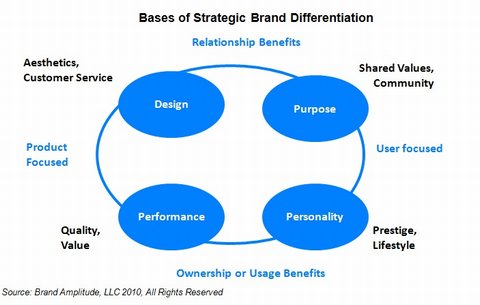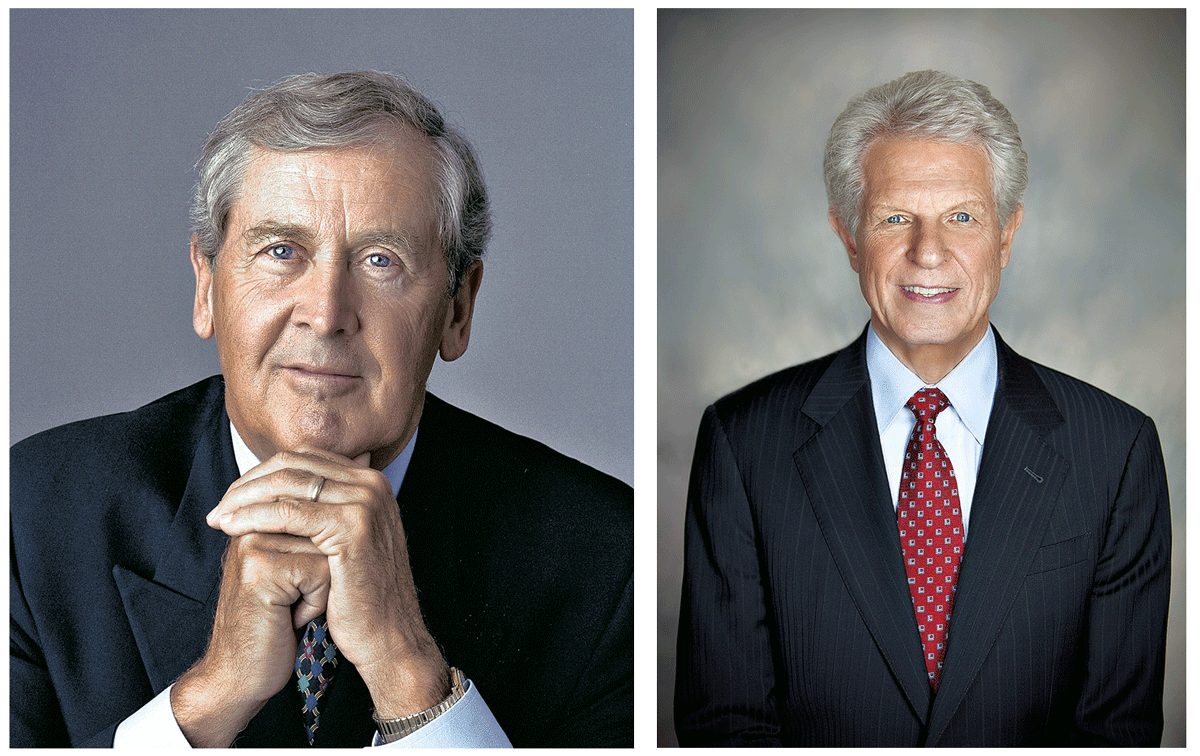Abraham Maslow, the man famous for formulating one of the most ubiquitous tools in the marketing toolbox, the Hierarchy of Needs, was also famous for admonishing against over reliance on one tool.
His caution has come to be known as the law of the instrument or “Maslow’s Hammer”. “It is tempting, if the only tool you have is a hammer, to treat everything as if it were a nail”.
Evolving competitive market places have placed enormous pressure on brand strategy. Competition changes perceptions of the existing options by default. Maintaining differentiation then is more than a matter of updating positioning. It requires layered and nuanced approaches rooted in the customer experience, shared community, and brand purpose.
Positioning is indeed a powerful tool, especially when the competitive landscape is well demarcated, consumer targets are identifiable, and advantages reside largely in product performance or functionality. But over reliance on positioning can lead strategists to overlook other means of differentiation and possibly even spell disaster for their brand.
The Case of Blockbuster’s TOTAL ACCESS
Blockbuster may be a case where over reliance on positioning lead to failure. In September 2010, the company filed for bankruptcy protection in order to reduce its debt to $100 million from $900 million and its shares are trading for 8 cents. The reasons for its downward slide are generally attributed to failure to adapt to changes in technology and consumer needs which were exploited by upstarts Netflix, Redbox, Vudu, and Hulu as well as non-traditional competitors like YouTube, Vimeo, video on demand, and the DVR. In retrospect, the story seems almost inevitable. After all, TIME magazine wrote off the Blockbuster brand as early as 2005. (“Blockbuster to Remake Itself Under Creditors,” Wall Street Journal, September 24, 2010.)
But the script didn’t need to run that way. Blockbuster had its chance and came closer than most people know to actually beating Netflix and the other new players at their own game.
In 2006, Blockbuster began actively fixing its brand issues. By 2007 they had eliminated customer-annoying late fees, upgraded many stores, and developed new ways of ensuring the right movie would be available at the right time. Most importantly, although late to the online subscription game, they scrambled and created an online offering that was every bit as good as Netflix and possibly better. A new program called TOTAL ACCESS allowed customers to return DVD’s received in the mail to the store and exchange them for new ones on the spot, thus addressing the single biggest flaw in the mail-delivery model –- lack of instant gratification. The TOTAL ACCESS program was backed by a $46 million television advertising campaign.
The impact was immediate. Subscriptions jumped to 4 million in 2007 and online revenue nearly doubled to 10.4% of total movie rentals. Store traffic also increased. While membership still trailed Netflix’s base of 7 million, Blockbuster’s position as the industry leader in rentals gave it tremendous leverage with Hollywood and with potential partners. Plans were in the works to create exclusive content and new ways of delivering the latest content faster and cheaper than anyone else. Netflix was on the run.
But the traditional positioning driven brand strategy underlying TOTAL ACCESS only allowed Blockbuster back in the game. While strategically sound, the program was insufficient to reinvent the brand and make consumers see it in a new way. To differentiate, Blockbuster needed to connect with customers in a new, more meaningful way. This kind of resonance would have required thinking beyond the functional or even the emotional advantages of being able to rent a movie both through the mail and a store.
In retrospect, Blockbuster could have chosen to reinvent the rental experience to incorporate more intangible, community oriented benefits that could only be delivered in-person. Renting a movie is about as exciting as going to the grocery store. There is very little rewarding about the experience. The best you can hope for is to get in and get out without being disappointed. What were the opportunities to improve the experience? Where was the emotional attachment to the Blockbuster brand? With over 35 million customers, there must have been some opportunity to elevate the experience, much as Target has elevated the mass merchandising experience, Starbucks has elevated the coffee experience, or Lexus has elevated the car shopping experience.
For a big brand like Blockbuster, re-imagining ways of differentiating based on non-performance dimensions would probably require delivering against the needs of a narrower segment that values a brick and mortar experience or at least knowing that their online experienced is backed by a physical presence (If you doubt the existence of such a group, just check out the lines at Apple’s Genius bar). It may even have required a new brand or sub-brand. These are not easy or comfortable choices. But as Jack Trout says in his new book, Repositioning, “…it’s better to be niched than dead” (p.60).
Would it have made a difference? Maybe not, but the possibilities are intriguing nonetheless.
Moving Beyond Positioning for Differentiation
Blockbuster is just one example of a brand that has succumbed to evolving competition. There is hardly a business today that doesn’t face competition from outside its category, and many are struggling. In this environment, continuing to rely on positioning as the sole or even primary source of differentiation could be a serious mistake. Instead brand managers must challenge themselves to seek multiple sources of differentiation.
While positioning is one way to establish a difference, another way is to map what, in an ideal world, customers would think and feel about the brand across multiple dimensions, including performance. The modern strategy toolbox recognizes that there are many ways to create and sustain strategic brand advantage, only some of which are Product or Usage focused. Others are more user or relationship focused.
Sources of Strategic Brand Advantage
A brand strategy simply is a plan for how a company will support its business strategy by building relationships with consumers. As the above diagram illustrates, competitive advantage can be sourced from elements of customer service, design, or personality, as well as performance based on quality or value. It can come from a deep recognition and participation in a subculture or a sense of shared purpose or community. These methods of differentiation do not negate the value of positioning but suggest it is only one part of a complete brand strategy.
Contributed to Branding Strategy Insider by: Carol Phillips, Founder, Brand Amplitude with additional courtesy from MENG – Marketing Executives Networking Group.
The Blake Project Can Help: The Brand Positioning Workshop
Branding Strategy Insider is a service of The Blake Project: A strategic brand consultancy specializing in Brand Research, Brand Strategy, Brand Licensing and Brand Education






5 comments
SilverMaple24
January 13, 2011 at 8:44 am
I agree 100%. I would like to take the analysis one step further, Where was Blockbuster’s innovation strategy? Yes they made the process of renting less painful than going to the dentist but where was their blue ocean strategy? How did they augment the value proposition so that customers would chose to rent videos from them?
Marcelle Green
January 21, 2011 at 10:07 am
It seems to me that Blockbuster just gave up after the Total Access program. Solely depending on positioning proved to be an unsuccessful tactic so they should have went a step further. Competitors came out with a list of reasons why renting from them would be more beneficial while presenting a personable image to the public…it worked. Change is not always a bad thing especially when competitors are offering new and improved options. Like the title suggests, you may have to reconsider some branding and marketing tactics that not only incorporate new selling techniques but also shows personality that helps the brand relate to its audience.
Marcelle Green
Eric Brody
February 7, 2011 at 2:06 pm
Or maybe Blockbuster didn’t think broadly enough about its positioning opportunity in the first place. It was inevitable that others would follow in the space. And deliver value in new ways that delighted customers. Clearly, they waited for both forces to take hold before reacting.
While I understand where you’re coming from about positioning, I believe that the “elements of customer service, design, or personality, as well as performance based on quality or value” which ultimately provide your competitive advantage – must in deed flow from brand positioning.
Clearly, brand positioning (to use your words) is only one component of a complete brand strategy. But delivering competitive advantage through the benefits you mention above, in the absence of being grounded in what makes your brand distinctly you, is a recipe for adding to the noise and confusion that permeates the lives of your consumer.
I actually think you might want to frame your question differently. Maybe “with a positioning in place that we know to be credible, relevant, distinct — how do we best surprise and delight our customers through (the benefits you mention above)?
Michael DiFrisco
February 7, 2011 at 7:57 pm
You could argue that Blockbuster never had a chance as the rental marketplace evolved. After all, they spent years standing for video-rentals-at-retail in the mind of customers and prospects. Had they explored other distribution methods earlier in their evolution, they could have broadened what they stood for in the mind. But just as Netflix is the in-the-mail rental company, and Redbox is the in-store rental company, Blockbuster was fighting an uphill battle.
Ron Strauss
February 8, 2011 at 6:21 pm
Marketing has no generally accepted standard for performance. Every term, every concept has many meanings with no agreement on which is generally accepted. As such, you wind up with babble and cross-talk. Any of the ownership or usage benefits can potentially form the basis for a position, depending on the strategies and occupied positions of the competition, the needs of the market, and perceptions of value.
Comments are closed.